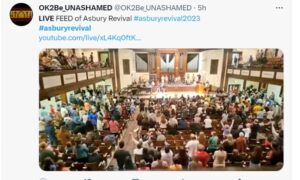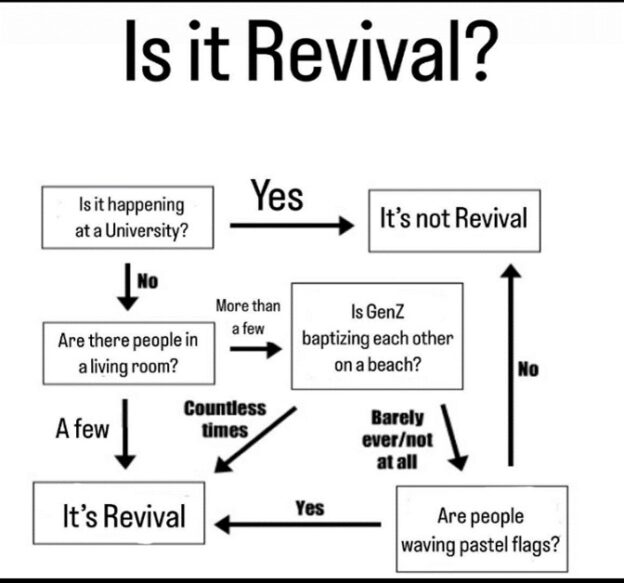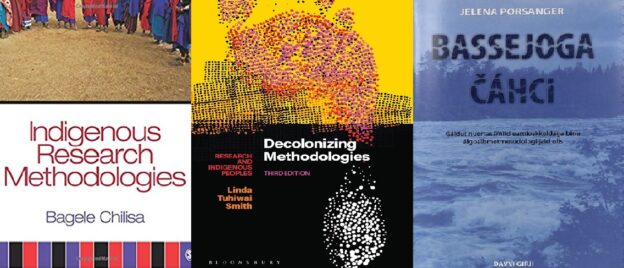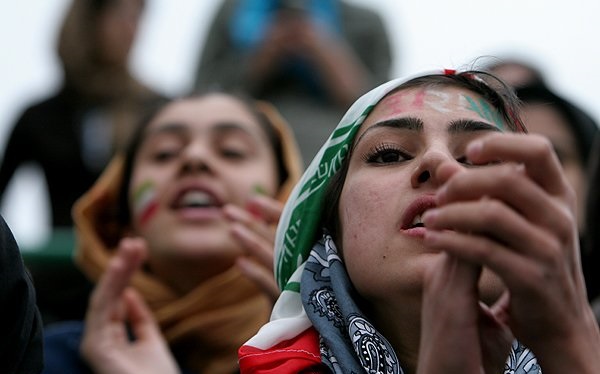By Laura Hall
On the 8th of February 2023 imagery connected to the hashtag #asburyrevival started trending across social media platforms. Revivalism is intrinsic to evangelical varieties of Christianity and ‘outpourings of the Holy Spirit’ as (innumerable) testimonies, in the form of multimedia video clips in the evolving digital archive attest to, are feature of Pentecostal/Charismatic movements. Revivals, specifically at Asbury, a Methodist College in the Wesleyan Holiness tradition have previously occurred in 1905, 1908, 1950 and the 1970’s. At the time of writing, Asbury ‘23 is still ongoing; it has been displaced from its original location when the town of Wilmore was overwhelmed by hundreds of thousands of curious visitors taking selfies. Connected (#asburyawakening) revivals have broken out in a number of other locations, comparisons drawn with the ‘Toronto Blessing’ of the 1990’s, and similar events. Where Asbury ’23 differs, is in the prolific use of social media to ‘authorise’ and ‘authenticate’ (or disauthenticate) a Christian practice (a ‘revival’) visually: by means of imagery.
The global circulation of images, connected via digital objects such as hashtags (a textual inclusion) or emojis, is a feature of the shift from the ‘new’ media of the early 2000’s (‘Web 2.0’), to what Lev Manovich refers to as the age of ‘more media’ (2020)—the proliferation of social media platforms where visuality is the key mode of communication, such as Instagram (launched 2010) or TikTok (2016). The networking of imagery, (such as the Iranian protests over compulsory hijab wearing, or clips of the moment climate activists threw soup over Van Gogh’s Sunflowers in some recent examples), are a feature of our ‘more media’ world. Whilst the imagery associated with the revival at Asbury is not quite as provocative, the principal is the same.

Figure 1. Google Image Search. Searching Images sources and web locations. Left: Asbury Revival 1970 juxtaposed with Asbury Revival 2023. Right visual matches located by the algorithm.
An ‘event’, in this case a revival at Asbury College in Wilmore, Kentucky, sparked an image reaction: the networking of images on a scale that was global (I traced reactions from Nigeria and South Korea amongst other locations), and simultaneous with a number of ‘citizen journalists’ and participants providing live streaming for a seemingly affective worldwide virtual audience. Social media users annotated the images by commenting, either positively or negatively, liking, tagging, altering, and recirculating them, (a user-generated classification system called a ‘folksonomy’), and platforms provided time/date stamps; an opportunity, as Niederer & Colombo (2019) describe, for ‘knowledge co-production’.

Figure 2. Example of one of many livestreams of #asburyrevival shared via Twitter








